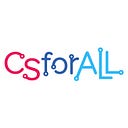One Remote Classroom Turned Their 3D Printer Lessons into Donating Masks for Essential Workers
Learn How Computer Science + COVID19 Brought Together One Remote Classroom Together to Help the Community in the COVID-19 Crisis
On March 13th Chicago Public Schools announced that it would be closing its doors and moving to remote learning due to the risks of Covid-19. I quickly gathered any materials I thought were necessary to engage my students in remote learning. Teaching ideas began swirling in my head but were interrupted by many unknowns and questions. How can we transition a lab class that focuses on hands-on learning through doing and student collaboration to an online platform? How will we meet the academic, social and emotional needs of our students? What about those we will not be able to reach?
Josephine Locke Elementary School students band together in a time of need and go the extra mile for others. It is the heart of the school. I started with the pulse of our school when thinking about how to teach students innovative computer science lessons during the pandemic. I looked at my Monoprice MP Select Mini 3D Printer V2 and began like many of our projects begin — with a simple question. How can I use this 3D printer to help others during the pandemic? I shared my thoughts with Locke students in a project kick-off video and our virtual meetings. The students were intrigued and ready to go start another CS design adventure with me.
We would go through the design process together by sharing videos, successes, and challenges along the way. In hopes that students would move beyond just understanding the components of 3D printing and mechanical skills. Knowing about 3D print files, slicer programs and the filament reel is important but it is not what guided our learning. Working together as a community, we were immersed in solving a problem using emerging computer science technology. Students used their fundamental technology skills to share our project with the world through a media campaign including digital posters and videos. Through their efforts, and to my surprise, I find myself continuing to share our story.
“I learned that there are many people that are in need of masks but they don’t have enough. My favorite part of the project was just knowing that I was getting to help someone else. The project changed me by allowing me to help others which is something I will try to do more often” -Katie 6th grader
“My favorite part of this project was taking what we learned to make a poster to get people’s attention.” -Kailey 6th grader
The students first discussed and outlined design specifications for our project to include a filtration option for the mask to be completely reusable. We came across a project from students from Medicine University of South Carolina who shared their project file for a cartridge system and mask. By reading the detailed report from the University, students learned that their plastic cartridge system had to be replaced after each use. Before moving to another design together we emailed John Yost, a member of the MUSC PPE mask team, to confirm the design was one-time use.
We moved on to look through project files on Thingiverse. Students reflected on the commitment to innovation of online open source communities. We read about people who use 3D printers all over the world to source materials they could not otherwise find in their areas. We found a 3D project file that met our specifications from MrDWGraf and I ended our Google Meet with many students anticipating the final product. I shared videos of the slicer program and a time lapse video of the mask file printing. Our next challenge was trying to find sold-out elastic bands for the mask. Students put their minds together and came up with using yarn instead. So far, we have been able to donate thirty-five masks to essential workers including, nurses, Amazon workers, police and fire-fighters.
“What I learned from the project was the importance of 3D printing and all the amazing work a 3D printer machine can do to help others. My favorite part of the project was working on my interview video. I really enjoyed learning the depths and all the wonders a machine can do to help others. This project had a huge impact on me, and I believe on others too. This project showed me the value of those who risk their lives for us and to value everything you have. This project changed my way of thinking of my surroundings. Many should value what they have, even if it’s not what you wanted. Just be appreciative. You never know what you can change from day to night.” — Emily 7th Grader
I am a technology enthusiast, but through this pandemic I have found a new level of appreciation for how computer science brings us all together. I cannot imagine what things would look like if we could not stay somewhat connected with our students. Hope is an action that happens in classrooms all across the United States. Teachers and students are exploring innovative ideas and working as a community to make tomorrow better.
About the Author: Kinga Baut-Pindel, a CPS graduate who feels a strong connection to the community where she teaches. She is part of the CS4ALL CPS chapter bringing equitable computer science education to all students. She teaches middle school IB Design at Josephine C. Locke Elementary School. Locke elementary is located on the northwest side of Chicago. Locke is a staple neighborhood school serving underrepresented Chicago Public students. Each September it kicks off the beginning of the school year with a community Back to School Bash. By late June 8th graders are celebrated walking down the hallway; teachers who have taught generations of their families wishing them success in changing the world outside outdoors for better.
